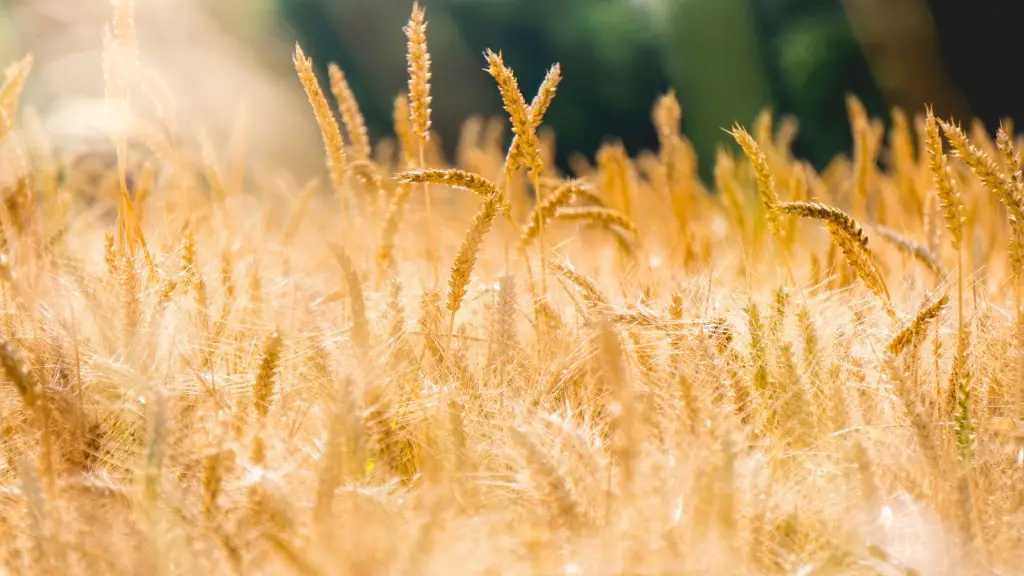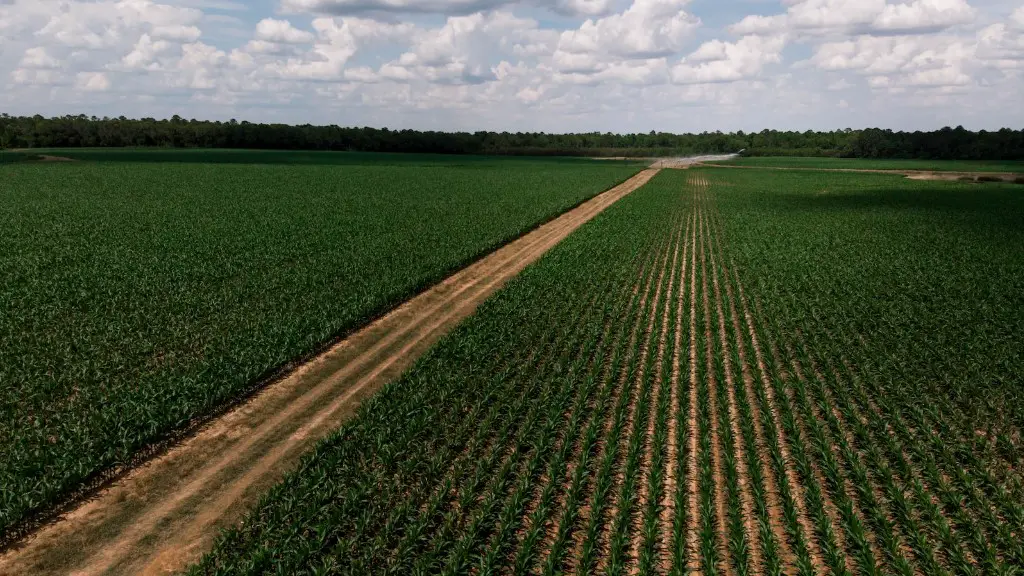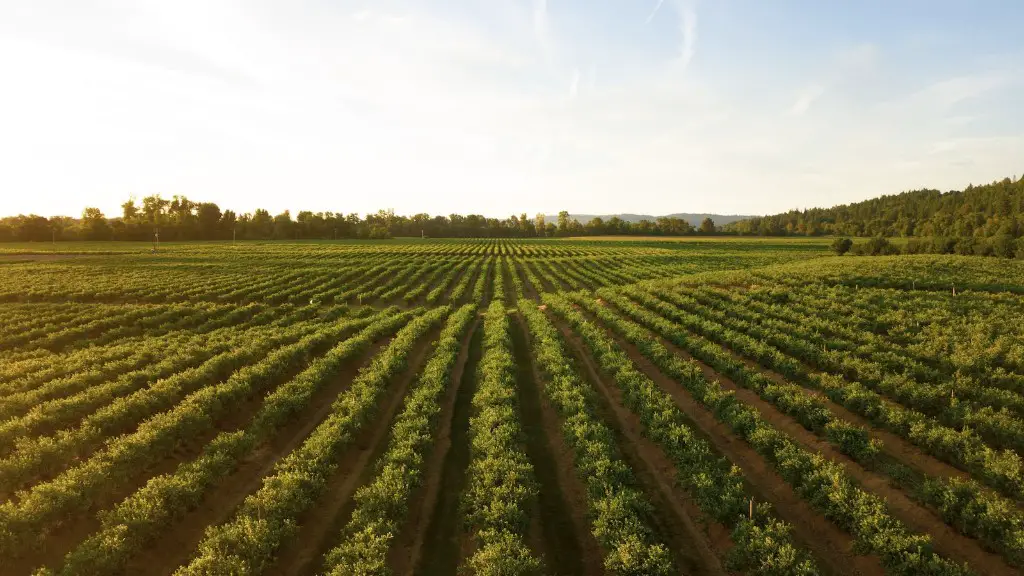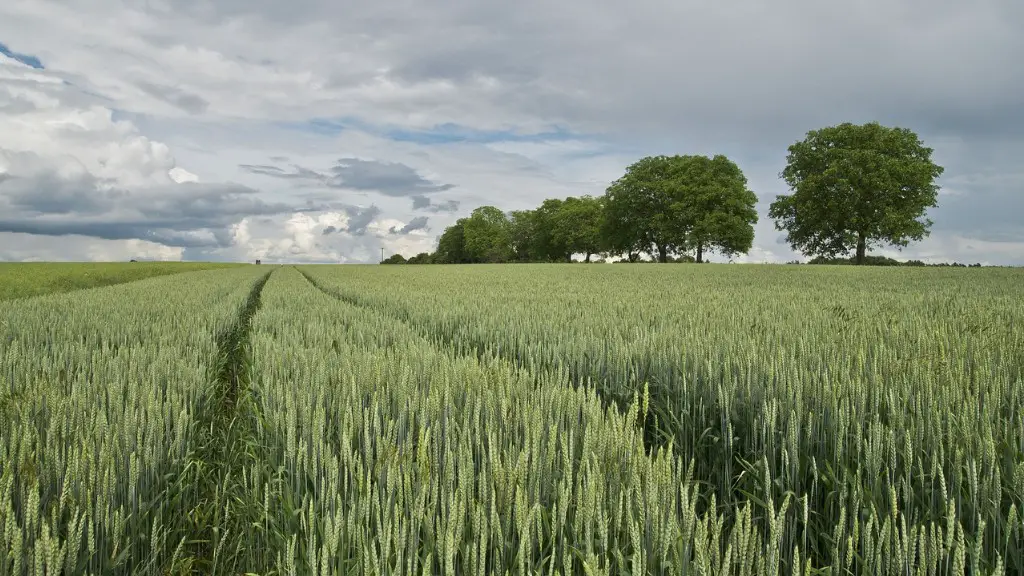Mycorrhizae are a powerful tool for an agricultural setting. This mutualistic relationship between mycorrhizal fungi and a plant’s roots acts as a beneficial exchange between the two parties. Mycorrhizae act as a bridge between the soil and a plant, aiding nutrient uptake and water availability and offering protection against nematodes and soil-borne pathogens. In order to understand how mycorrhizae help in agriculture, it’s important to consider their importance in the larger picture of the environment.
Mycorrhizal fungi modulate the nutrient supply from the soil to the plant. They expand the surface area of the root and increase the total surface area of roots-soil interface. This promotes absorption of water, minerals and other micronutrients from the soil. Thus, mycorrhizae are beneficial in enhancing the nutrient uptake of plants in agriculture. Additionally, mycorrhizae can also increase stress tolerance, as they provide extra water and nutrient uptake even during times of drought or soil infertility.
Mycorrhizae are able to protect plants from pests and diseases by acting as a physical barrier between the soil and the root of a plant. The process can help to increase resistance to soil-borne pathogens, decrease root damage and improve the effectiveness of insecticides. Further, mycorrhizae also act as an immunological agent by stimulating the plant’s immune system and producing antimicrobial substances that inhibit pathogen activity in the roots.
In a sustainable agricultural system, mycorrhizae can help to promote soil fertility and improve soil structure. They can also increase the overall health of the soil by sequestering carbon and nitrogen and releasing beneficial compounds, such as hormones and vitamins, into the soil. In the long run, this could increase the efficiency and reduce the need for chemical fertilizers, thereby reducing the environmental footprint of agriculture. Finally, mycorrhizae can also improve crop yields by decreasing the risk of crop failure and disease.
Soil restoration
Mycorrhizae can be used as a tool for soil restoration, as they are able to help to improve soil fertility and structure. By their very nature, mycorrhizal fungi form symbiotic relationships with plants and thus can act as an intermediary in the cycle of soil fertility. The fungi improve the uptake of essential nutrients by the plant, and consequently, the decomposition of plant material. This process helps to replenish the soil with essential nutrients that can be used as fertilizer, as well as aiding in the breakdown of organic matter.
In addition to their ability to improve soil fertility and structure, mycorrhizae can also help to protect against soil erosion. The extension of the root-soil interface through the formation of a mycorrhizal network helps to reduce the amount of soil disturbance by water and wind. This process can reduce the amount of sediment flowing through water systems, as well as help to prevent loss of soil from heavy rain and wind events.
Mycorrhizal fungi are beneficial in restoring degraded soils. By helping to increase soil fertility and structure, as well as reduce soil erosion, mycorrhizae can be a valuable tool for restoring soils that have been damaged due to agricultural activities or natural disasters.
Mycorrhizae can also be used to increase the water-holding capacity of soil by forming a network of hyphae within the root zone. This process helps to reduce soil water evaporation, as well as reduce water runoff. Additionally, mycorrhizae can reduce nutrient leaching by helping to bind soil particles, making them unavailable for runoff.
Nutrient availability
The role of mycorrhizal fungi in improving nutrient availability also needs to be considered. Mycorrhizae are capable of assimilating organic and inorganic forms of nitrogen, phosphorous and sulfur, as well as other micronutrients, from the soil. This process helps to provide a steady supply of nutrients to the soil and, consequently, the plants, which can help to increase the overall productivity of plants in an agricultural setting. Furthermore, the fungi are also able to scavenge extra nutrition from the soil, which can be beneficial in times of low nutrient availability.
Mycorrhizae are also known to act as a form of biological nitrogen fixation. They are able to convert atmospheric nitrogen into ammonium, which can then be absorbed by the plants. This process helps to improve the overall fertility of the soil, as well as reduce the need for chemical fertilizers and the associated environmental impacts.
In addition, mycorrhizal fungi are capable of converting insoluble phosphorous in soils into a form of soluble phosphorous. This process helps to increase phosphorous availability, which can be beneficial in agricultural systems where soil phosphorous levels are low.
Finally, mycorrhizae can also reduce the amount of fertilizer required, as they are able to store organic molecules from the soil in their hyphae and then transport them to the roots of the plant. This process can help to ensure that nutrient levels remain at optimum levels, reducing the need for chemical fertilizers.
Disease control
Mycorrhizal fungi can help to control diseases in agricultural systems. The fungi form a protective layer around the roots of the plant, thus reducing the amount of direct contact with viruses and bacteria. This process can help to reduce disease severity and improve overall crop yields.
Mycorrhizal fungi are capable of suppressing the germination of pathogenic spores in the soil. The fungi produce enzymes and other compounds, which prevent the germination of spores. This process can reduce disease severity, as well as help to maintain soil fertility.
Mycorrhizal fungi can also act as microbial warriors for plants; as they release antimicrobial compounds, which can help to inhibit the growth of pathogens in the soil and the roots of the plants. Additionally, the fungi can also help to modulate the immune response of the plants, providing them with extra protection against disease.
Finally, the fungi can help to reduce the amount of chemical pesticides needed for disease control. The fungi produce antimicrobial compounds, as well as produce enzymes which can act as bio-insecticides, offering additional protection against pests and diseases. This process can help to reduce the environmental impacts associated with the use of chemical pesticides.
Ecosystem diversity
Mycorrhizal fungi can also help to promote biodiversity in the soil by creating networks of interactions between soil organisms. The fungi form beneficial relationships with bacteria, fungi and other organisms, creating a complex system of interactions which helps to maintain soil health. By creating this network, the fungi can help to increase the overall productivity of the soil and promote soil fertility.
Mycorrhizal fungi can also help to reduce nutrient pollution in agricultural systems by acting as a buffer between soil and plants. By forming a barrier between the two, the fungi can help to reduce the amount of nutrients being leached from the soil, thus reducing the amount of nutrients entering water systems. This process can help to maintain soil fertility, as well as reduce the risk of eutrophication.
Finally, mycorrhizal fungi are also capable of reducing the amount of organic matter in the soil by converting it into simple sugars, amino acids and fatty acids. This process helps to eliminate carbon dioxide from the soil and can contribute to a decrease in greenhouse gases.
Overall benefits
Mycorrhizae provide numerous benefits to the agricultural system. By aiding in nutrient uptake, protecting against pests and diseases, improving soil fertility and promoting biodiversity, mycorrhizae can be used as a tool to improve agricultural productivity and reduce environmental impacts.
Mycorrhizae can help to reduce the amount of fertilizer and chemical pesticides needed, as well as reduce nutrient leaching and erosion. The fungi can also help to reduce water pollution, by controlling nutrient and sediment levels in water systems. Further, mycorrhizae can also help to reduce greenhouse gas emissions, by converting large amounts of organic matter into simple sugars and amino acids.
In summary, mycorrhizae can be a powerful tool for an agricultural system. By promoting nutrient uptake, protecting against pests and diseases and reducing nutrient pollution, mycorrhizal fungi can help to improve agricultural productivity and reduce the environmental impacts associated with agriculture.





